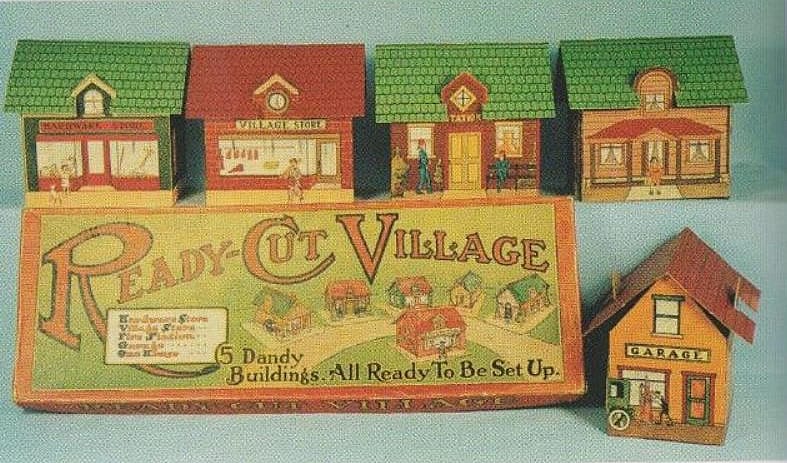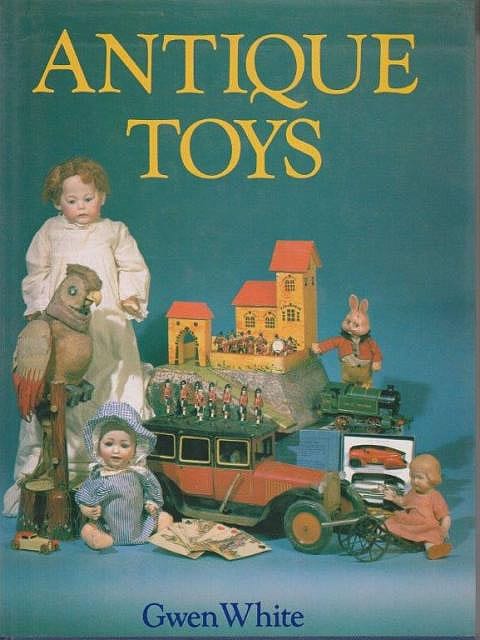Does it Belong on a Layout?

By Jan Athey, Librarian Winter 2017
The official mission statement of the National Toy Train Library (NTTL) is “to acquire and preserve paper and ephemera relating to toy trains”. However, over the years, the NTTL Committee Chair, Ron Morris, and I have used an informal tool when selecting books to add to the collection. Our tool is that we ask ourselves, “Does this item belong on a layout?”
As a result the subjects of books in the NTTL include any item which might possibly be included on a toy train layout. For this reason the NTTL possesses many books which fall into the category of General Toys. A few of these are Classic Toys of the National Toy Train Hall of Fame by Scott G. Eberle; The Story of American Toys by Richard O’Brien; and The Man Who Changed How Boys and Toys Were Made by Bruce Watson. While none of these books focus exclusively on toy trains, all of them contribute to the broader picture of the layout in their coverage of toy vehicles, castles, Erector sets, animals and so much more.
A substantial number of books in the collection fall into the category of Toy Vehicles. Whether modeling the battlegrounds of World War II or a scene from Plasticville’s 1950s idyllic America, layouts require vehicles to help set the stage. To meet this need the NTTL collection includes books such as the classic American Motortoys, by Lillian Gottschalk; and Christie’s World of Automotive Toys by Mike and Sue Richardson. For those who prefer creating a layout with European toy trains, we have a French book on vehicles called Autocars & Autobus: les Transports Publics en Miniature by Mike Duprat and Philippe Moro. The collection even boasts a book on the very popular Hotwheels!
Toy Soldiers and Figures are a category covered extensively by the NTTL collection. A general guide to the subject is provided by James Opie’s Collecting Toy Soldiers, which offers a short history of toy soldiers as well as instructions on how to mount an exhibition on a layout. Specialized titles range from an expansive volume The Great Book of Hollow-Cast Figures, by Norman Joplin (studies collecting figures from 1893 to 1967), to the 2-volume set War Toys by Reggie Polaine and David Hawkins, which focuses on the German companies of Hausser-Elastolin and Lineol.

In addition to the many handbooks on how to create one’s own structures and scenery, the NTTL also contains books on Toy Buildings. An outstanding work on this subject is Toy Buildings 1880-1980 by Patty Cooper and Dian Zillner. This book supplies the reader with hundreds of color photographs depicting churches, schools, restaurants, railroad stations, airports, bus stations and much more. It serves as an excellent guide to identification of antique buildings. A recently published book Toy Forts & Castles: European-Made Toys of the 19th & 20th Centuries by Allen Hickling offers an intriguing glimpse into the old structures of Europe.
Antique Toys is also the subject of many NTTL books. Many of these books illustrate the origins of toy trains. They show early horse and wagons, primitive fire engines, live steam engines, tractors and pulleys, all of which contributed in one way or another to the evolution of toy trains. Among NTTL holdings are Katherine Morrison McClinton’s well-known work Antiques of American Childhood. In 1969, the “father of toy trains”, Louis H. Hertz wrote a popular volume called Antique Collecting for Men which is contained in the NTTL. The collection also includes Antiques Roadshow Primer: the Introductory Guide to Antiques and Collectibles from the Most-Watched Series on PBS by Carol Prisant.
So, while most of the books at the National Toy Train Library focus on toy trains, you will also find a lot of books on the subjects mentioned in this article. We invite you to use the NTTL by visiting, calling or sending an e-mail.
Your questions are welcome. Phone: (717)-687-8976 or E-mail: [email protected]
For an overview of the National Toy Train Library, go here.







